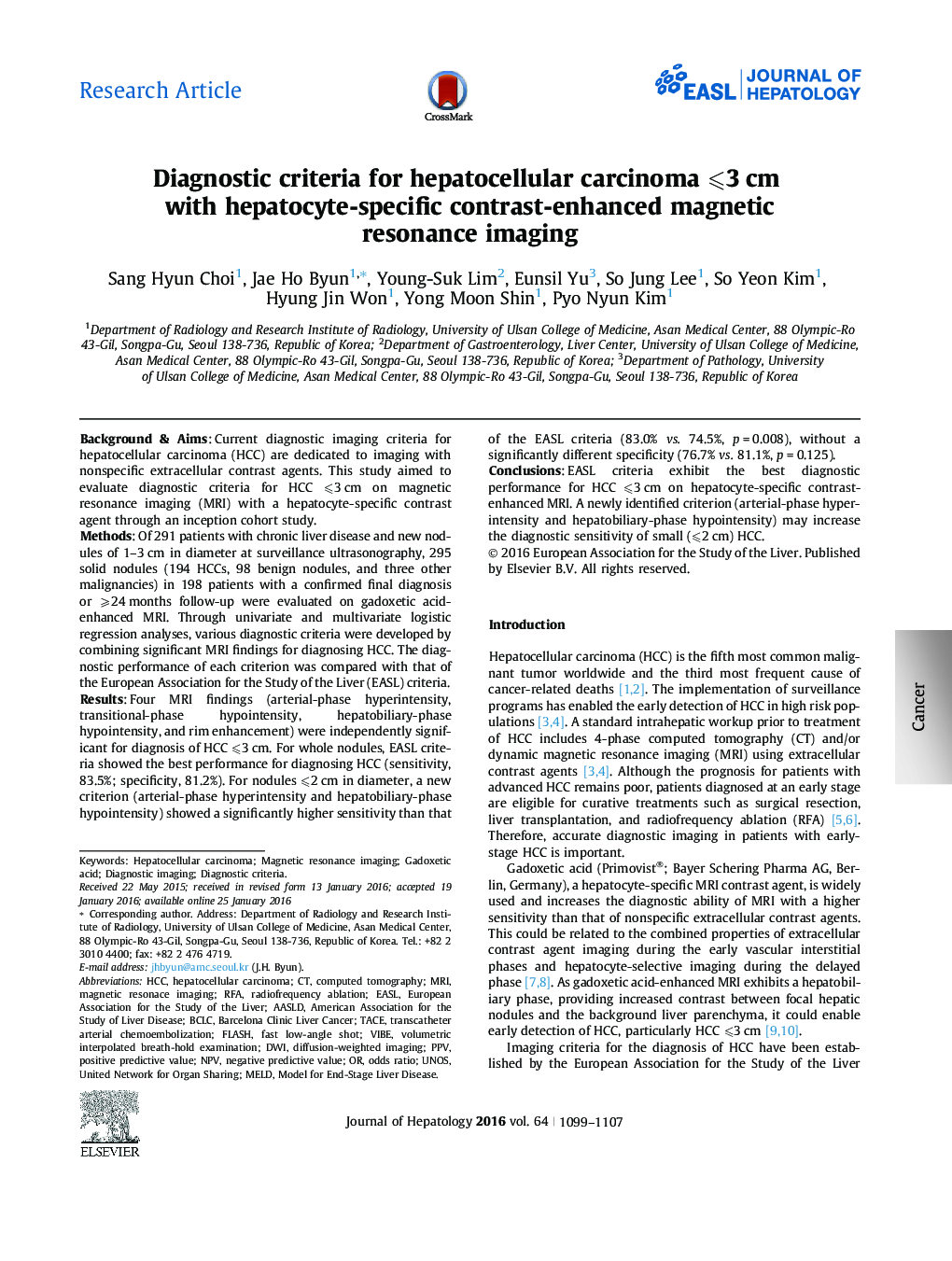| Article ID | Journal | Published Year | Pages | File Type |
|---|---|---|---|---|
| 6101073 | Journal of Hepatology | 2016 | 9 Pages |
Background & AimsCurrent diagnostic imaging criteria for hepatocellular carcinoma (HCC) are dedicated to imaging with nonspecific extracellular contrast agents. This study aimed to evaluate diagnostic criteria for HCC ⩽3 cm on magnetic resonance imaging (MRI) with a hepatocyte-specific contrast agent through an inception cohort study.MethodsOf 291 patients with chronic liver disease and new nodules of 1-3 cm in diameter at surveillance ultrasonography, 295 solid nodules (194 HCCs, 98 benign nodules, and three other malignancies) in 198 patients with a confirmed final diagnosis or ⩾24 months follow-up were evaluated on gadoxetic acid-enhanced MRI. Through univariate and multivariate logistic regression analyses, various diagnostic criteria were developed by combining significant MRI findings for diagnosing HCC. The diagnostic performance of each criterion was compared with that of the European Association for the Study of the Liver (EASL) criteria.ResultsFour MRI findings (arterial-phase hyperintensity, transitional-phase hypointensity, hepatobiliary-phase hypointensity, and rim enhancement) were independently significant for diagnosis of HCC ⩽3 cm. For whole nodules, EASL criteria showed the best performance for diagnosing HCC (sensitivity, 83.5%; specificity, 81.2%). For nodules ⩽2 cm in diameter, a new criterion (arterial-phase hyperintensity and hepatobiliary-phase hypointensity) showed a significantly higher sensitivity than that of the EASL criteria (83.0% vs. 74.5%, p = 0.008), without a significantly different specificity (76.7% vs. 81.1%, p = 0.125).ConclusionsEASL criteria exhibit the best diagnostic performance for HCC ⩽3 cm on hepatocyte-specific contrast-enhanced MRI. A newly identified criterion (arterial-phase hyperintensity and hepatobiliary-phase hypointensity) may increase the diagnostic sensitivity of small (⩽2 cm) HCC.
Graphical abstractDownload high-res image (129KB)Download full-size image
